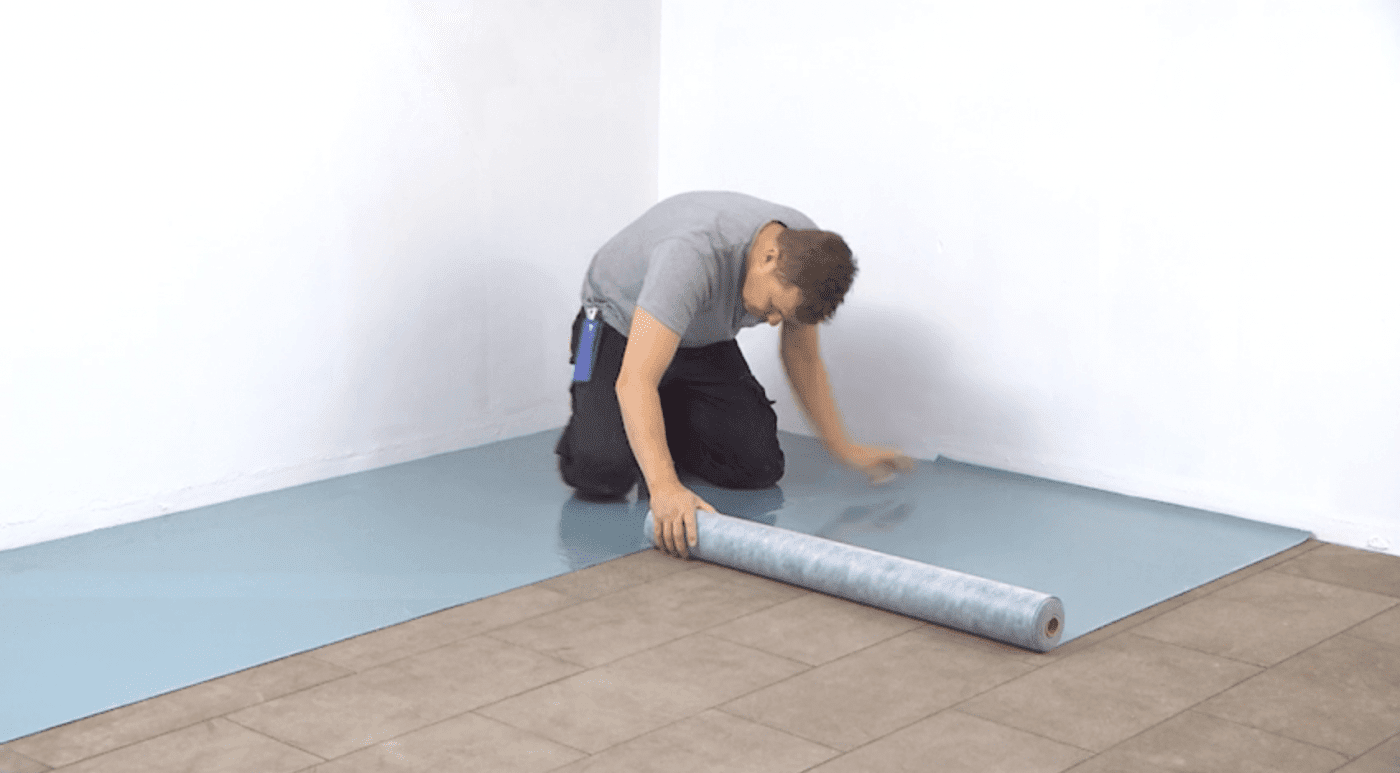Ever heard the saying, “You get what you pay for”? When it comes to vinyl plank flooring, this is never truer than with underlayment. Opting for the cheapest option could mean a noisy, uncomfortable floor, while investing in high-quality underlayment can transform your vinyl planks into a truly luxurious surface. But with so many different types of underlayment available, how do you know which one is right for your project?

Image: www.youtube.com
This guide will delve into the world of underlayment for vinyl plank flooring. We’ll explore the different types, their advantages and disadvantages, and how to choose the perfect underlayment for your specific needs. So, buckle up, and get ready to learn everything you need to know about this crucial component of your flooring project.
Why Underlayment Matters
Underlayment is the unsung hero of vinyl plank flooring. It acts as a buffer between your subfloor and the vinyl planks, providing a range of benefits that contribute to a better flooring experience:
- Sound Dampening: Underlayment absorbs impact noise, reducing the sound of footsteps and furniture movement. This is especially important in multi-level homes or if you have a noisy subfloor.
- Comfort: It adds a layer of cushioning, making your floor more comfortable to walk on, especially for barefoot traffic. This can be important in areas where you spend a significant amount of time standing.
- Improved Durability: Underlayment provides a level and stable base for your vinyl planks, minimizing the risk of scratches, dents, and premature wear. This is particularly important for high-traffic areas.
- Moisture Protection: Some underlayment options offer moisture resistance, preventing water damage to your subfloor and vinyl planks, particularly in areas prone to spills or moisture.
Types of Underlayment
There’s a wide range of underlayment options available, each with its own set of features and benefits. Let’s take a look at some of the most common types:
1. Foam Underlayment
Foam underlayment is a popular choice due to its affordability and ease of installation. It’s typically made of polyethylene foam and comes in various thicknesses. The primary advantage of foam underlayment is its excellent sound dampening capabilities. It offers a good balance between comfort and price, making it a suitable choice for many applications.

Image: allpanels.co.uk
2. Cork Underlayment
If you’re after a natural, sustainable option, cork underlayment is worth considering. It’s made from the bark of cork trees, a renewable resource. Cork underlayment boasts excellent sound dampening, thermal insulation, and moisture resistance. However, it can be more expensive than foam underlayment and may require specialized tools for installation.
3. Rubber Underlayment
Rubber underlayment is built for durability and longevity. This type is made from recycled rubber and offers exceptional impact resistance, making it suitable for high-traffic areas. It also excels at sound dampening and providing a comfortable feel underfoot. However, rubber underlayment can be heavier than other options, making installation more challenging.
4. Composite Underlayment
Composite underlayment blends the benefits of different materials, often combining foam, rubber, and other components. This creates a multi-layered underlayment that excels in various areas, such as sound dampening, moisture resistance, and comfort. It’s a versatile option that can meet the needs of different projects.
Choosing the Right Underlayment
Now that you understand the different types of underlayment, let’s discuss choosing the right one for your project. Consider these factors:
1. Subfloor Condition
The condition of your subfloor plays a crucial role in selecting underlayment. If you have a flat, level subfloor, you can opt for a thinner underlayment. But if you have an uneven or creaky subfloor, a thicker underlayment might be necessary to create a smooth and stable surface.
2. Traffic Levels
The amount of foot traffic your floor will experience should also guide your choice. High-traffic areas may benefit from a more durable underlayment like rubber or composite, while low-traffic areas can manage with a more affordable foam option.
3. Noise Concerns
If you need to minimize noise, prioritize underlayment with high sound dampening properties. This could include cork, rubber, or a thicker foam option.
4. Moisture Levels
In areas prone to moisture, such as kitchens or bathrooms, a moisture-resistant underlayment is essential to prevent water damage. Look for options labeled as “moisture-resistant” or “waterproof.”
5. Budget
Different underlayment types come with varying price tags. Consider your budget and choose an option that offers the right balance of features and affordability for your project.
Installation Tips
Installing underlayment is a relatively straightforward process, but it’s important to follow these tips to ensure proper installation:
- Prepare the subfloor: Ensure that your subfloor is clean, dry, and free of debris. Repair any cracks or imperfections to create a level surface.
- Lay down a moisture barrier: If you are installing in a moisture-prone area, lay down a moisture barrier over your subfloor before installing underlayment.
- Cut and fit the underlayment: Cut the underlayment to fit the dimensions of your room, ensuring that pieces are tightly butted together.
- Tape seams: Securely tape any seams between underlayment pieces to create a continuous layer.
- Install vinyl planks: Once the underlayment is in place, you can proceed with installing your vinyl plank flooring.
What Kind Of Underlayment For Vinyl Plank Flooring
Conclusion
Choosing the right underlayment for your vinyl plank flooring can significantly impact the look, feel, and lifespan of your floor. By considering your subfloor condition, traffic levels, noise concerns, moisture levels, and budget, you can select the perfect underlayment to create a comfortable, durable, and beautiful flooring experience. Remember, don’t skimp on underlayment—it’s a valuable investment that will pay off for years to come.






